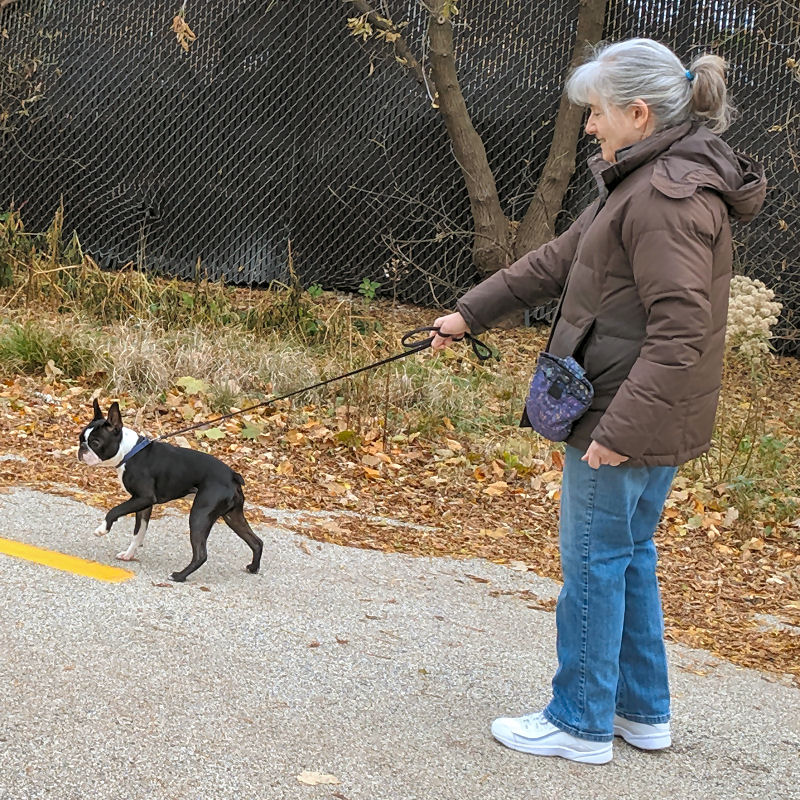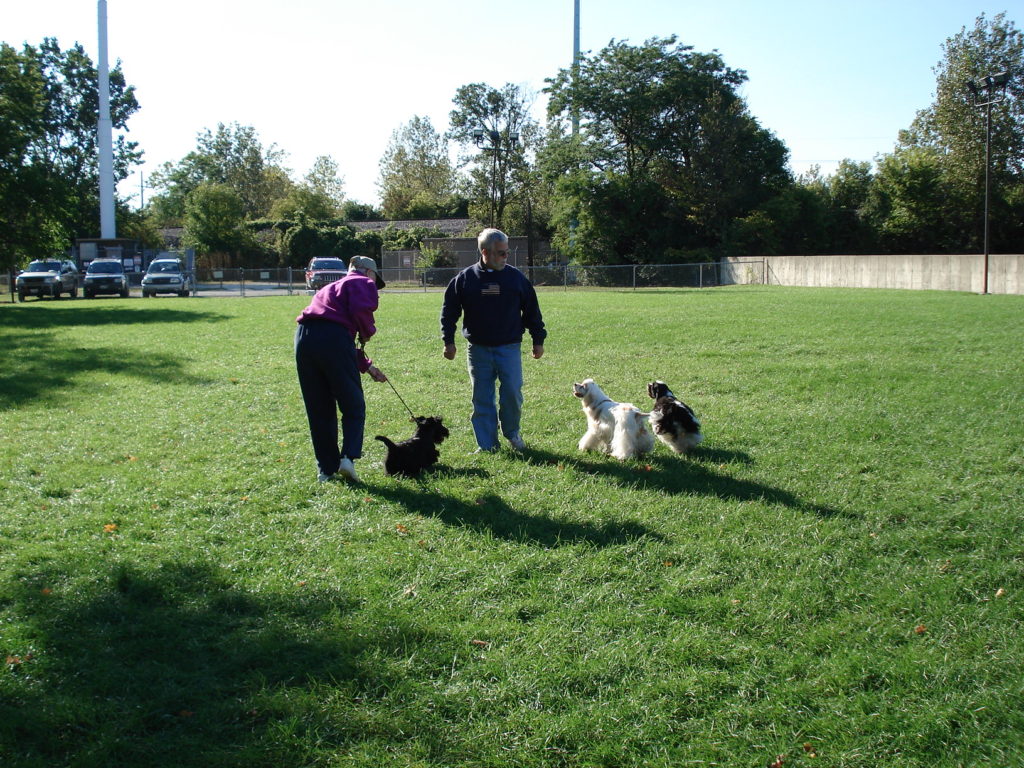Want to cure your dog of pulling on leash? Would you love to enjoy loose leash dog walking? It’s easier than you think. Stop giving your dog so much information.
Too much information
Think about it. If there is constant pressure on your dog’s collar (or harness), he or she has absolutely no reason to look for you, pay attention to you, or check on your whereabouts. Your dog knows exactly where you are and what you’re doing without a glance. You are, reliably, at the other end of the pressure.
That’s just one of the reasons retractable leashes are a bad idea. There is always, by design, pressure on the dog’s collar or harness. There’s no way to avoid it, unless the retractable’s lock is deployed. And if the lock’s always deployed, you’re just carrying a leash that’s huge, awkward, and heavy. Ditch those retractable leashes!
Keep some things to yourself
If, on the other hand, your dog isn’t getting any feedback from the leash, he or she will “check in” to see where you are and what you’re doing. And, if every check-in is rewarded, chances are your dog will do it more often. It doesn’t have to be a big thing. A simple “good boy,” or tiny treat is just fine.
In this case treats would be better, because your dog has to come to you to get the cookie. We know it’s a natural reaction to meet your dog halfway to deliver the treat, but don’t. Let your dog come all the way back to you for the reward. It teaches your dog so many positive things. You’re the primary source for all good things. Staying closer to you means less distance to cover for treats. It doesn’t take much effort to get a reward.
Breaking the pulling habit
If loose leash dog walking seems beyond your reach, take it in small steps. However long your dog’s been pulling, it may take equally long to break the habit.
All dog walks can’t be training walks. There are lots of different kinds of walks with your dog: exercise walks, potty walks, training walks, gotta get out of the house walks. And training works best if that particular walk is short, focused on training, and no other behavior is allowed (including pee breaks!). To signal a training walk, you may want to have a particular outfit for yourself, and your dog, that lets him/her know what’s going on. Dogs do know the difference when you put on the jacket with all the pockets, or he gets to wear a different collar.
Start right with a loose leash
When you have your dog hooked up on leash, some treats in your pocket, and a training walk on the schedule, have a plan. You’re probably not going to get much of anywhere the first session, if you even manage to get outside.

Put on the leash. If it stays slack, give a reward. If you take a step and the leash tightens, stop. Don’t say anything. If your dog is behaving like a pulling fool at the end of the leash, ignore it. Stay quiet. At some point, your dog will realize that things aren’t going according to (his) plan. This is the moment that he may look at you. If he does, you’re allowed to say “Good Fido!” (Use your dog’s name, not Fido.) If he comes toward you, let him see you have a yummy treat in your hand. And he has to come all the way to you to get it.
When your dog is close to you and the leash is slack, try taking a step or two. As soon as the leash tightens, stop. Wait for your dog to acknowledge you and come to you.
Remember – we said you wouldn’t be getting very far on this “walk.”
Quick on the uptake
Dogs are pretty smart. As soon as your dog figures out that you really mean it – that pulling isn’t going to be allowed any more, he/she will get on board. Every time you have a training walk, your dog will remember sooner, react faster, and come more quickly. They have to be convinced you’re serious. So be serious about the behavior. It will open up so many more possibilities for having fun on loose-leash walking with your dog. For more fun games to speed you on your way to loose leash walking with your dog, check out Book 3: Let’s Go For a Walk!

